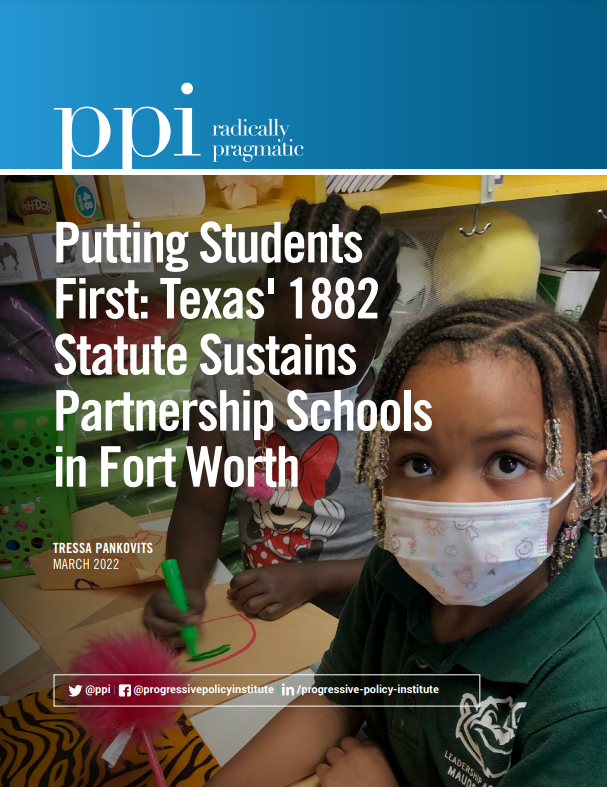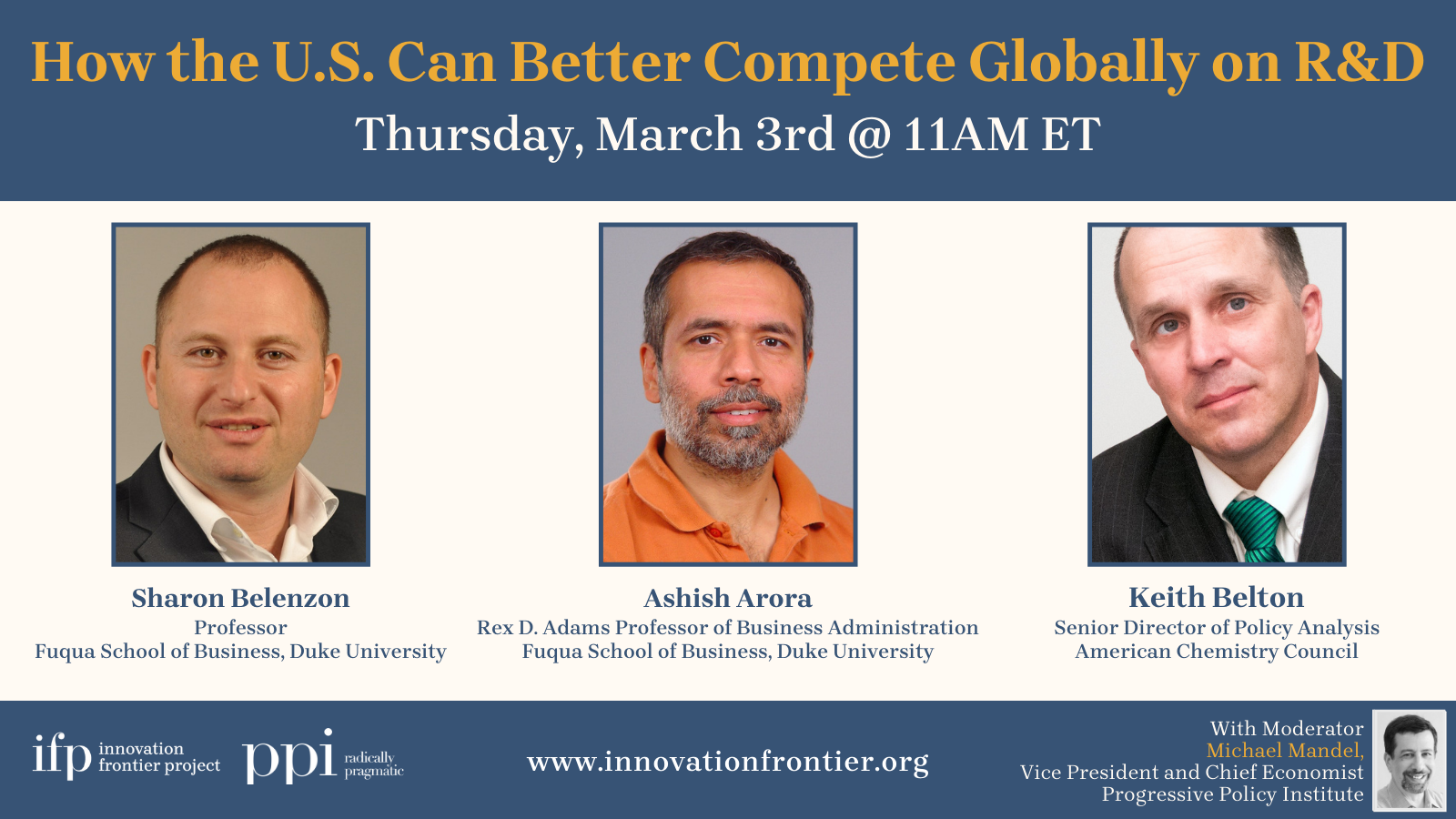PREFACE
The pandemic put both a microscope and a wide-angle lens on America’s education systems. Under the microscope, parents had a window into individual classrooms as never before, as their children struggled to learn through laptops. Many didn’t like what they observed. Through the wide angled lens, the country was jolted by evidence that school districts everywhere were failing to adapt. Failing to meet the moment. Failing to stem learning loss. Many recognized that perhaps 150 years were more than enough of centralized, bureaucratic school systems. What we at Progressive Policy Institute have been saying for many years — that it is time for something different — began resonating with parents across the country. What that “something” is will likely be different in different places to meet differing needs. But for large school districts, it is painfully obvious that top-heavy central administrations that push a standardized, one-size fits all school experience are as antiquated as paper road maps. We believe that everyone — except perhaps overstaffed central bureaucracies and the teachers unions — would benefit from more decentralized and more accountable school systems.
One auspicious approach is the partnership model. The model in a nutshell: a school district partners with a qualified nonprofit to operate a school or a subset of its schools, usually using a performance contract to define the terms of the relationship. Even before the pandemic disrupted the education of a generation of students, an increasing number of urban districts around the country were experimenting with the partnership model. As with anything new, some early adopters are doing better at it than others. This report tells the story of one promising effort: the Leadership Academy Network (LAN) in Fort Worth, Texas. LAN is a partnership between the Fort Worth Independent School District (FWISD) and Texas Wesleyan University (TXWES). LAN is unique because it is effectively a “homegrown” initiative, meaning the district did not simply bring in a proven charter school operator to manage its failing schools; it launched the turnaround on its own prior to its partnership with Texas Wesleyan University. It is a modern partnership adopted by a district willing to venture out of its bureaucratic comfort zone in order to sustain improvements in what had been some of its lowest performing elementary and middle schools.
This report will cover how and why the FWISD went the partnership route, how the LAN got up and running, how it works, and how it is working. It will also take the reader inside LAN’s schools, which will hopefully inspire pragmatic thinkers to encourage more places to consider its data-driven instructional model. At the center of LAN’s model is the practice of providing students support to master the skill or topic being taught before they move on to the next lesson. Now is the moment to embrace innovation in America’s public K-12 school systems. Millions of students who were already academically behind prior to the pandemic are suffering from significant learning loss. Therefore, it is imperative that we accelerate and scale efforts like Fort Worth’s LAN partnership to improve and modernize our education systems.
INTRODUCTION
In 2017, bitter and protracted fights over sanctuary cities and transgender bathrooms dominated both the Texas legislative session and media headlines. There was at least one shoving match on the House floor and, after a particularly contentious debate, a couple of legislators threatened to shoot each other dead in the Capitol’s parking lot.
Amidst that chaos, Texas’ lawmakers did manage to pass Senate Bill 1882, which provides financial incentives for school districts to partner with carefully vetted nonprofits to operate district schools. SB 1882 is similar — but not identical — to partnership statutes in a growing number of other states, including Colorado, Indiana, New Jersey, Tennessee, and others. Los Angeles, Memphis, Indianapolis, Charleston, S.C., Springfield, Mass., Chicago, and several other cities are also trying partnership schools. Partnering has become a new model of how large urban districts can reinvent themselves, shifting from centralized, rule-driven, and bureaucratic to decentralized, mission-driven, and innovative.
In each state, the bills’ architects wanted to prompt traditional districts to proactively improve the delivery of education services. In the case of perennially failing schools, the goal is for the district to bring in a qualified organizations to improve schools the district itself had been unable to turnaround. In cases where a school was limping along but not necessarily failing, the bills’ sponsors hoped offering the partnership model would inspire district leaders to give a partner the autonomy to turn mediocre schools into great schools. In some places — Indianapolis and Denver, for example — if a school’s leader and enough teachers want to, they can vote to become an autonomous school.
While some districts grant more autonomy than others, in almost all cases, the nonprofit’s contract with the district is a performance contract that articulates specific success metrics for improved student outcomes. If the school meets the deliverable, the contract is renewed. Sometimes, the successful school is allowed to expand or replicate on another campus. If the school fails to meet its performance goals, the district replaces the operator or returns the school to district governance. By replacing the low performers, replicating the best, and developing new models to meet new needs, the district almost guarantees continuous improvement. This new formula — autonomy, accountability, diversity of school designs, and parental choice — is simply more effective than the centralized, bureaucratic approach we inherited from the 20th century.
Because governance is decentralized to the local school level, these schools are also nimbler when challenges like those wrought by the pandemic arise. Decisions can be made with increased parental input and without central office bureaucratic red tape.
In some places, the partner-operated school remains in the same school building, with the same neighborhood students. If there are empty seats after all zoned students enroll, the schools may enroll students from outside the zone using random lotteries. In other places, they are purely schools of choice. For example, three rural Texas counties have banded together to create a regional Rural Schools Innovation Zone of specialized high school academies. Students from all three counties can choose to attend any academy in the zone.
No matter how they enroll their student body, all nonprofit school partners must follow all state and federal laws while operating the school — anti-discrimination protections, the Americans with Disabilities Act, procurement procedures, workplace safety regulations, and so on — but they are exempted from most school district policies and in some places, collective bargaining agreements. Each partner has its own board of directors or trustees that oversees the school or schools, with various degrees of independence from the school district board. Our research finds that the more independence the partner’s board has, the better the model works.
In Texas, the 1882 statute spells out certain autonomies districts are required to give their partner-operator in order for the state’s department of education, the Texas Education Agency (TEA), to grant the extra funding. The required autonomies include freedom to make staffing, budget, and curriculum decisions. As Fort Worth Independent School District’s Chief Officer of Innovation David Saenz put it, “The state must be able to see (in the proposed partnership contract) that there has been no negotiation of terms on those issues between the district and the partner.” Other autonomies can be — and should be — negotiated before the performance contract is signed.
Texas’ exchange of extra funding for the mandatory autonomies is a pragmatic bargain for several reasons. School turnaround is difficult and sustaining improved outcomes is expensive. Providing an incentive for high quality school operators to take on a floundering school while giving districts an incentive to relinquish a low-performing school is a win for the students in that school building.
It also increases transparency and accountability. Because the district and partner sign a performance contract, all parties understand the metrics for success or failure from the outset of the partnership. If the partner doesn’t meet the terms of the agreement, at the end of the contract, it loses the right to continue operating the school.
Finally, when a school improves, the district gets to include its higher test scores in its submission to the TEA, thereby raising the entire district’s rating. And, the district is freed from managing a challenged campus, allowing it to redirect its resources to other campuses.
The district-nonprofit partnership model is one that large urban districts everywhere can employ to reinvent themselves. We have seen for ourselves that it can transform schools hamstrung by central-administration bureaucratic whim into mission-driven organizations liberated to innovate.
Progressive Policy Institute’s Reinventing America’s Schools project in 2020 published a comprehensive guide to this school model, complete with model legislation that incorporates the strongest elements of the various state statutes mentioned above. The schools we wrote about are known by different names in different places. In Camden, N.J., they are “renaissance schools.” In Indianapolis they are “innovation network schools,” while in Denver, innovations schools can organize themselves into “zones,” which are then commonly called “iZone schools.” Across Texas, they are nicknamed after the law that created them: “1882 schools.”
In Fort Worth, the nickname is especially appropriate, as the legislature passed SB 1882 in the nick of time for the district. FWISD had started a turnaround initiative in some of its low-performing schools that was making rapid progress, but it was running out of resources to sustain the momentum. SB 1882 created the mechanism that allowed LAN to continue what FWISD started.
READ THE FULL REPORT









